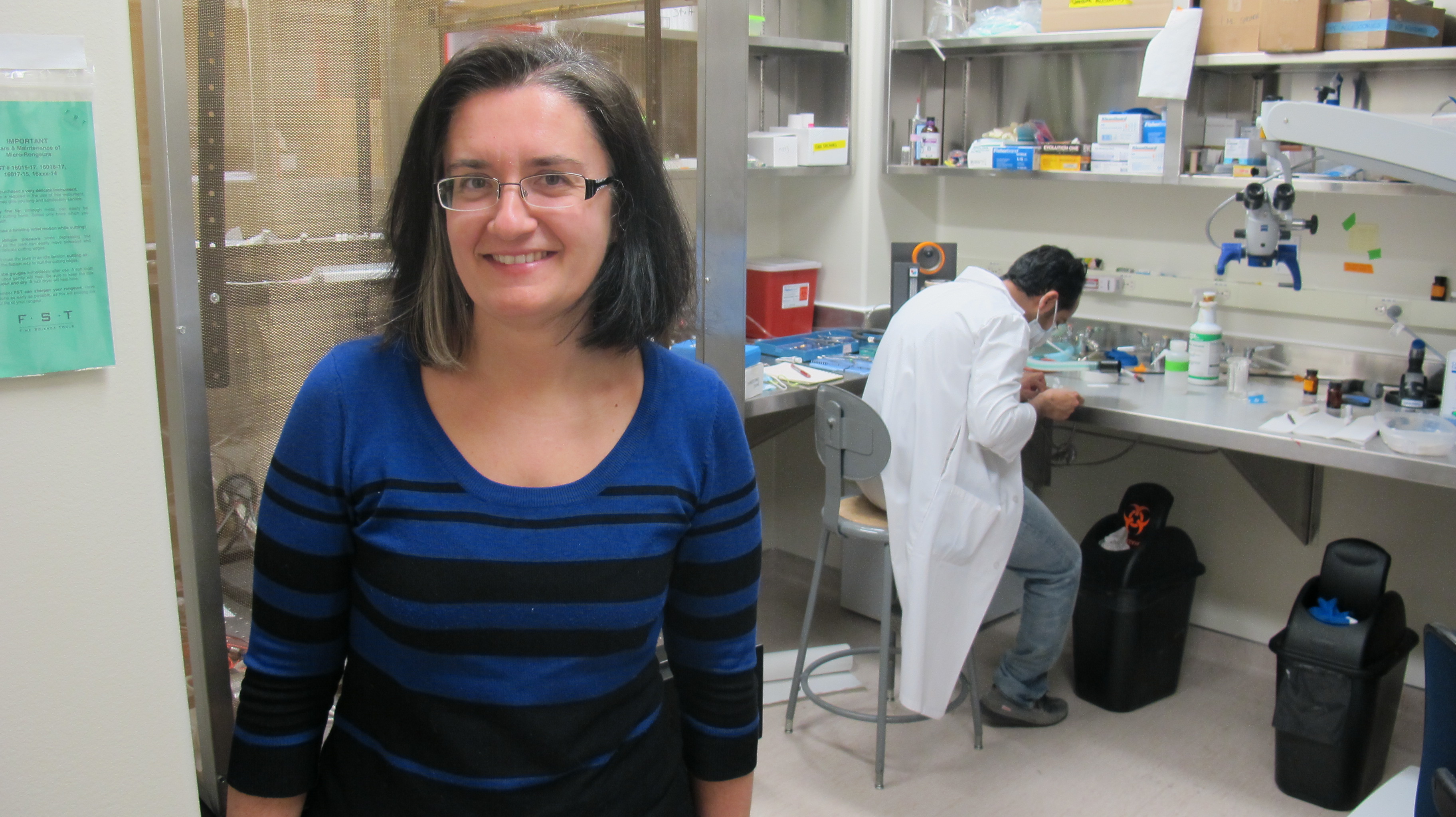
Silvia Pagliardini co-authored a paper in the journal Nature examining the science of sighing
Contrary to the words immortalized by the piano singer in "Casablanca," a sigh is far more than a sigh. Heaving an unconscious sigh is a life-sustaining reflex that helps preserve lung function.
Researcher Silvia Pagliardini knows it better than most. For three years she studied the science of the sigh while working as a postdoctoral fellow at the University of California, Los Angeles (UCLA). Today that work is helping give exciting new insight into a common human function.
Pagliardini is a co-author in a new UCLA/Stanford study that has pinpointed two tiny clusters of neurons in the brain stem that are responsible for transforming normal breaths into sighs. Published in the Feb. 8 advance online edition of Nature, the discovery may one day allow physicians to treat patients who cannot breathe deeply on their own--or who suffer from disorders in which frequent sighing becomes debilitating.
"A sigh is something very common and familiar. You experience it every day," says Pagliardini, a former member of the Jack Feldman lab in her time at UCLA and an assistant professor in the Department of Physiology at the University of Alberta's Faculty of Medicine & Dentistry. "Classically it's thought that sighs are generated by a reflex response that is important for preserving respiratory function. But it is much more than a reflex. It definitely has a central drive and origin."
"Sighing appears to be regulated by the fewest number of neurons we have seen linked to a fundamental human behavior," explains Jack Feldman, a professor of neurobiology at the David Geffen School of Medicine at UCLA and a member of the UCLA Brain Research Institute. "One of the holy grails in neuroscience is figuring out how the brain controls behavior. Our finding gives us insights into mechanisms that may underlie much more complex behaviors."
According to Mark Krasnow, a professor of biochemistry and Howard Hughes Medical Institute Investigator at the Stanford University School of Medicine, the new findings shed light on the network of cells in the brain stem that generates breathing rhythm.
"Unlike a pacemaker that regulates only how fast we breathe, the brain's breathing center also controls the type of breath we take," said Krasnow. "It's made up of small numbers of different kinds of neurons. Each functions like a button that turns on a different type of breath. One button programs regular breaths, another sighs, and the others could be for yawns, sniffs, coughs, and maybe even laughs and cries."
Using a pre-clinical model, Krasnow and his colleagues screened more than 19,000 gene-expression patterns and found roughly 200 neurons in the brain stem that manufacture and release one of two neuropeptides, which enable brain cells to talk to each other. Still, the scientists did not know which brain cells these neurons communicated with or why.
Conversely, Feldman knew that the same family of peptides, also found in human brain cells, was highly active in a part of the brain that influences breathing and plays an important role in sighing. What he had not identified were the genes or neurons that controlled them.
By joining forces, Krasnow's and Feldman's labs discovered that the peptides triggered a second set of 200 neurons which activate breathing muscles to produce a sigh.
The research teams found that blocking one of the peptides cut the sighing rate in half. Silencing both peptides halted ability to sigh completely.
According to the researchers, sighing is vital to lung function, and thus to life. On average, people sigh every five minutes, which translates into a whopping 12 sighs per hour.
The purpose of sighing is to inflate the alveoli, the half-billion, tiny, delicate, balloon-like sacs in the lungs where oxygen enters and carbon dioxide leaves the bloodstream. Sometimes individual sacs collapse, preventing air intake.
"When alveoli collapse, they compromise the ability of the lung to exchange oxygen and carbon dioxide," explained Feldman. "The only way to pop them open again is to sigh, which brings in twice the volume of a normal breath. If you don't sigh, your lungs will fail over time."
"Knowing which pathways are involved in this process, we can possibly find drugs that target these pathways to control sighing-for example in anxiety disorders and other psychiatric conditions where sighing grows debilitating," says Pagliardini.
The research was supported by the Howard Hughes Medical Institute (Krasnow), NIH grants HL70029, HL40959 and NS72211 (Feldman), a Walter V. and Idun Berry postdoctoral fellowship (Li), the NIH Medical Scientist Training Program (Yackle), and CIHR and AIHS postdoctoral fellowships (Pagliardini).